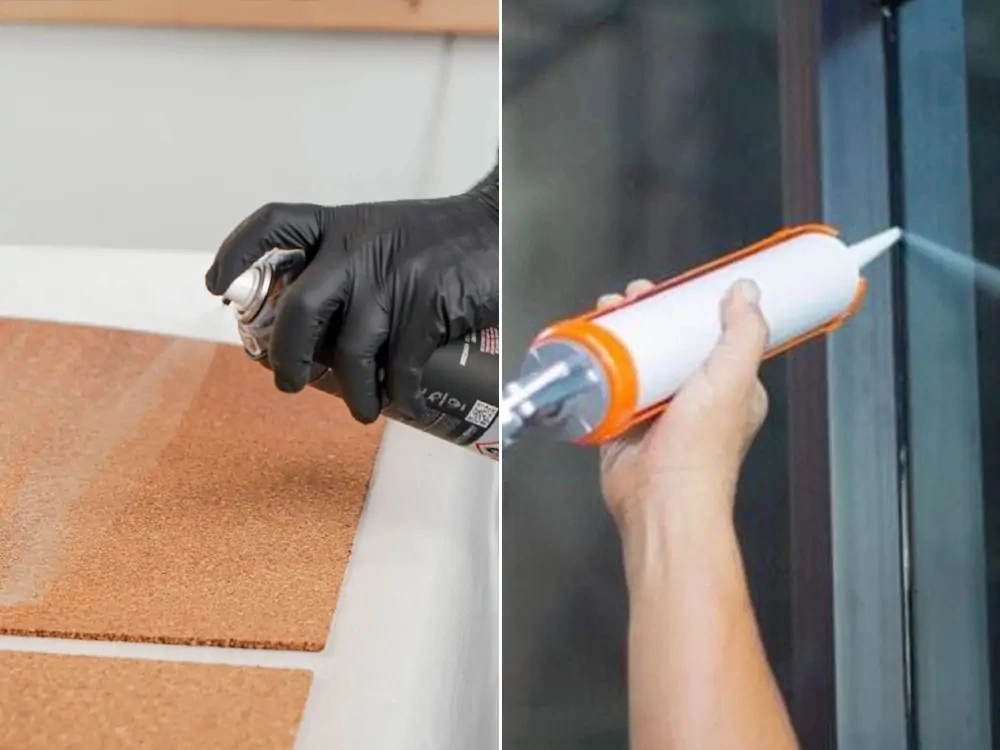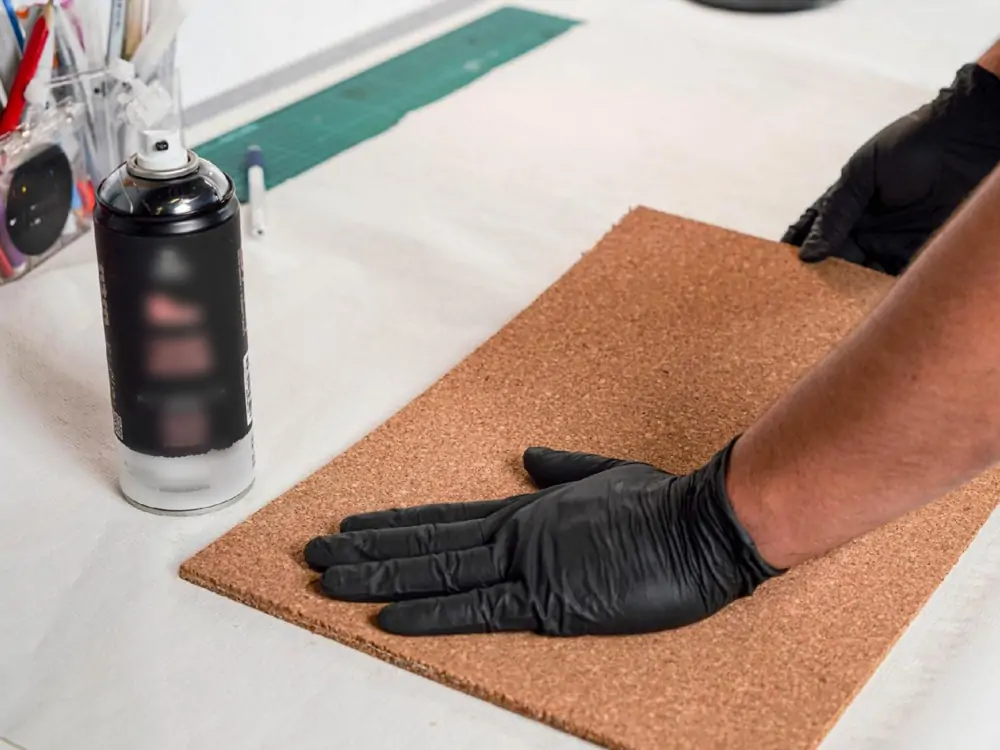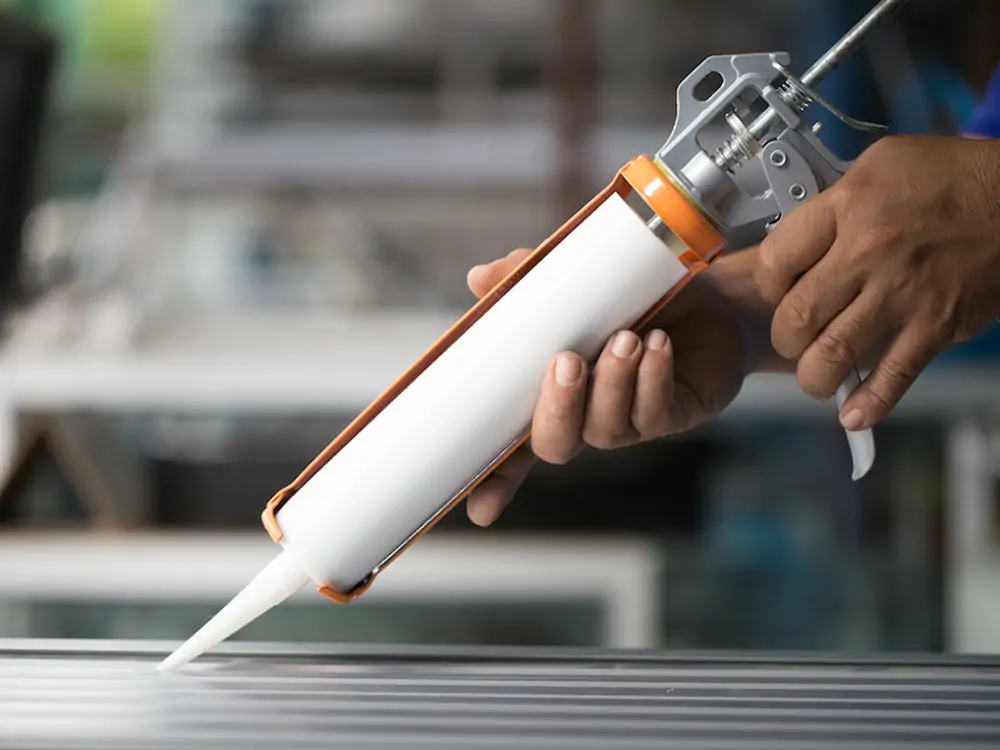Many would-be designers and DIY enthusiasts ask this basic question: what makes adhesives different from sealants? That is because adhesives and sealants are similar in some ways. Adhesives are used to bond stuff together while sealants are used to fill gaps or joints to prevent water or air from passing through.
In this post, we are going to shed light on the differences between sealants and adhesives, and their different use cases. Hopefully, here you find answers to some of your nagging questions.

Adhesives and Sealants: What’s The Difference?
What is a spray adhesive? And what is a sealant? Let’s first get to know them.
- Spray Adhesive: Spray adhesives are basically glue that are used to bond substrates together. For ease of application, these materials come in canisters. These adhesives are used for a wide range of purposes. Some are characterized by high tensile strength while others are not.
- Sealant: Sealants are materials that are used to create barriers and fill spaces. They provide protection against environmental elements such as water and glasses. Flexibility is the hallmark of sealants. They keep working even if there is an expansion or contraction of the material to which sealants are applied.
Spray adhesives and sealants are similar in the way that both of them share features such as adhesion, durability and cure. They both are expected to adhere to substrates, and withstand weather patterns and temperature changes. In some cases, however, you can use adhesives as sealants. For instance, a waterproof silicone adhesive can be used as a sealant.
Types and varieties of spray adhesives and sealants
Both spray adhesives and sealants can be categorized into several different types. To know what type of spray adhesive or sealant you need for your project, it is good to be familiar with these categories.
Spray Adhesives
There are specific formulations for spray adhesives for a wide range of materials. While there are some formulations that are used for common purposes, it is good to choose a specific spray adhesive that is designed for your project.
To give you an idea of how many types of spray adhesives there are, let’s look at the products manufactured by Sprayidea, one of the most well-known manufacturers of spray adhesives. This brand has released different formulations for headliners, fabrics, and for quilting, screen printing, craft, and many more.

Spray Adhesive

Sealants
Sealants
Sealants can also be categorized in several different types. Just like spray adhesives, not all sealants are created equal. For home, some of the most common types of sealants include acrylic, polysulfide, polyurethane, butyl, silicone, and water-based latex.
Sealants are primarily used to prevent the passage of gasses, fumes and liquids. However, you have to choose a particular formulation of sealant based on the type of project you are working on.
Applications and Use Cases
As we have mentioned, sealants and spray adhesives are used for different purposes. In this section, we are going to shed light on the general use cases of spray adhesives and sealants.
Adhesives are used to bond two or more substrates together. There is not just one adhesive substance that hardens. The stickiness is attributed to various molecular interactions. Some example projects include automotive seam sealing, honeycomb edge fill, medical device assembly, structural composite bonding, screen printing, and craft such as origami.
You may need to use a sealant for the same project in which you use a spray adhesive. For example, you can use an adhesive to bond two surfaces of something and then use a sealant at the perimeter of those surfaces to prevent moisture filtration.
Water and silicone-based household caulk is an example of a widely used type of sealant. Solvent-based acrylic sealants are often used for metal and plastic bonding. Relatively demanding applications such as windshield bonding and for encapsulations and fire barriers, two-component sealants are preferred.
Advantages and Disadvantages
Spray adhesives have quickly gained popularity for their ease of use and versatility. For some projects, sealants offer greater usability and convenience. However, both have their limitations as well. Let’s dive in.
Spray Adhesives
Spray adhesives are super easy to use, but that’s not the only advantage. They bond quickly, dry clear, and are waterproof and heat resistant. These adhesives offer easy repositioning. And if you happen to apply more of it somehow, it is pretty easy to remove the excess glue.
There are plenty of options to choose from. For an application that requires resistance to chemicals, UV lights and other environmental factors, you will be better off with an acrylic adhesive. If you know that the bonding will withstand a lot of vibration and stress, a polyurethane-based adhesive is recommended for your project.
There are disadvantages, too. They are not often designed to bond substrates that withstand a lot of impact. And if you are not careful, you can end up applying more glue which can get messy.
Sealants
Sealants are known for their strong adhesion, durability, flexibility, waterproofing, weather resistance, chemical resistance, and thermal stability. However, you will not get the benefits if you end up choosing the wrong type of sealant. For example, construction sealants are not good for craft projects.
However, there are some disadvantages of sealants as well. First, they take longer to cure. This long curing time disqualifies sealants for projects that require quick turnaround. Sealants also require specific humidity and temperature levels for curing.

How to know whether you need spray adhesive or sealant for your project
Are you wondering if you should choose spray adhesive or sealant for your project? Well, there are some questions you can ask yourself to make a better decision.
What materials do you want to bond together? That is the first consideration. A structural adhesive is required for a structural bond of a load-bearing object. For a non-structural bond that does not bear loads, you may want to use a sealant.
Consider the substrate materials as well. If the bond is supposed to withstand certain thermal and environmental conditions, it should also be taken into consideration. Acoustical or thermal insulation may be required for some projects.
In general, you need spray adhesive for projects such as attaching a piece of fabric to a surface, bonding two pieces of paper or a piece of paper to a cardboard, or laminating two layers of something together.
Sealants are ideal for filling seams between bricks or tiles, sealing around doors and windows, or sealing cracks in wood or concrete.
Common Misconceptions About Spray Adhesives and Sealants
Some misconceptions exist about spray adhesives and sealants, particularly among DIY enthusiasts. Be aware of those myths because they can prevent you from making the right choice. Here are some of those myths:
Myth 1: All spray adhesives are stronger than sealants
Spray adhesives are for bonding, while sealants are for creating flexible barriers to prevent moisture filtration. Given the use cases of these two materials, it does not necessarily mean that spray adhesives are always stronger than sealants. You have to choose spray adhesive or sealant based on the type of project.
Myth 2: All spray adhesives create permanent bonds
There are spray adhesives that are intentionally formulated for repositioning, not permanent bonding. These adhesives are used for temporary setups and crafts. So, it’s a misconception that spray adhesives only create permanent bonds.
Myth 3: You can use spray adhesives instead of sealants
No, you cannot use either spray adhesive or sealant for any project because they are not interchangeable. Overlaps can be noticed in some applications, but these two types of materials have their distinct functions.
Myth 4: All sealants are waterproof
Contrary to popular belief, sealants do not provide complete waterproofing. Its waterproofing property depends on its formulation. In most cases, however, you can expect sealants to offer water resistance.
Frequently Asked Questions About Adhesives and Sealants
What are common uses for spray adhesives?
There are many day-to-day applications for spray adhesives. They are very useful for art projects, crafts, repairing appliances, and even furniture. There are spray adhesives for headliners, fabrics, upholstery, carpet, wallpaper and what not. Spray adhesives are widely used in screen printing, quilting as well as fancy DIY projects.
What materials does spray adhesive bond well with?
With spray adhesives, you can bond wood, metal, fabric, foam, leather, cardboard, foil, glass, corkboard, and many types of plastics and rubber.
Do I need a spray adhesive or sealant?
Spray adhesives are used in crafts and repairing, to bond pieces to things together. Sealants are, on the other hand, used to fill joints or gaps to prevent stuff from getting wet. In some cases, an adhesive can also be used as a sealant. A sealing adhesive basically works as a sealant.
Are sealants the same as caulk?
While the terms “sealant” and “caulk” are often used interchangeably, there’s a technical difference between them. Caulk is more rigid, while sealants are flexible. Sealants are better than caulk for spaces that contract and expand.
Conclusion
The bottom line is, spray adhesives are for bonding while sealants are for filling joints to make something water-resistant or airtight. If you are doing something that requires wood, metal, foam, fabric, cardboard, leather, glass, rubber, plastic or things like that, you need a spray adhesive. There are many types of spray adhesives, so you have to choose one that works well with the materials you want to bond together.
Once you have joined the materials, you can fill the joints or gaps to prevent water and air from passing through. For this, you may want to use sealants. We hope now you are better informed about both spray adhesives and sealants. We also hope you have already figured out what you need for your project.
